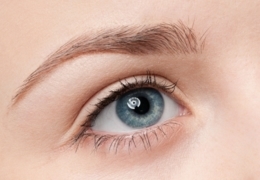Living history: Edmonton museums worth visiting
Museums offer a glimpse of history – through archives, artifacts, displays and photography – that cannot be found anywhere else. Whether you’re interested in learning more about Alberta’s oil industry roots, the province’s aviation history or the background of some of Edmonton’s most prominent citizens, there is a museum to quench your thirst for knowledge.
Fort Edmonton Park
-
Phone Number
- 780-496-7381Primary
-
Directions
Fort Edmonton Park offers a detailed glimpse into four distinct aspect of Edmonton’s past: the fur trading, settlement, municipal and metropolitan eras. Visitors can see a Hudson Bay Company trading fort, streets from 1885, 1905 and 1920 and a 1920s era midway. Costumed interpreters walk around the park playing characters based on real life individuals, adding a layer of authenticity. Have a drink in the Hotel Selkirk, watch a film in the Capitol Theatre (circa 1929) or have your photo taken in the Ernest Brown Photo Parlour.
Strathcona County Museum & Archives
-
Phone Number
- 780-467-8189Primary
-
Directions
Built in 1959, this building was originally Sherwood Park’s first fire hall, and it eventually housed the RCMP, too. It became a museum in 1997, with displays showing the lives of settlers from the early 1900s. Permanent exhibits include a general store, train station, grain elevator, dairy barn, country church, parlour, barber shop and more. The museum is also home to more than 18,000 artifacts and 140 metres of archives. Guided tours are available, in addition to school tours.
Alberta Pioneer Railway Association
-
Phone Number
- 780-472-6229Primary
-
Directions
This volunteer-run museum is open on weekends every summer, from Victoria Day weekend till Labour Day. There are more than 75 cars and locomotives to see, including CNR passenger trains, Prairie mixed freight trains, NAR passenger trains, NAR work trains, auxiliary trains and special equipment. It’s the biggest railway museum in Alberta and the third-largest in Canada. Plus, visitors can take a ride on a vintage train – locomotives and trains run on long weekends only.
John Walter Museum
The museum, located in Kinsmen Park, is a small house that tells the story of John Walter and his family. Born in Scotland, he came to Canada in 1870 and was a Strathcona resident from 1875 until 1915. He eventually became one of Edmonton’s richest citizens but lost everything when the river valley flooded and wiped out his empire. The museum offers an interesting look at the Walterdale area, which used to have coal mines, saw mills and brick yards but is now one of the most cherished natural areas in Edmonton.
Reynolds-Alberta Museum
-
Phone Number
- 780-312-2065Primary
- 1-800-661-4726Tollfree
-
Directions
It opened in 1992, and covers Alberta’s history from the 1890s onwards. If you like vintage cars, trucks, motorcycles, bicycles, farming equipment and more, this could become your favourite museum. The displays provide a fascinating look at how our agriculture, aviation, transportation and industry have evolved. Visitors can even enjoy chauffeured rides in vintage cars around the museum grounds in the summer. The museum was named for a world-renowned collector and Wetaskiwin resident, Stan Reynolds, who donated more than 1,500 artifacts to the province of Alberta.
Leduc 1 Energy Discovery Centre
-
Phone Number
- 780-987-4323Primary
- 1-866-987-4323Tollfree
Located just outside of Devon, Leduc Number One Energy Centre offers a detailed look at Alberta’s oil industry history. The museum is at the same site where black gold was first found in the province on February 13, 1947. Visitors can climb on a working oil rig, see the world’s largest drill bit and models of pipelines, or learn about alternative energy in the museum’s learning lab. There are artifacts, interpretive displays, archives, photos and more at this not-for-profit centre, operated by the Leduc/Devon Oilfield Historical Society.
Rutherford House Provincial Historic Site
-
Phone Number
- 780-427-3995Primary
-
Directions
Rutherford House was originally the home of Alberta’s first premier, Alexander Rutherford – he moved into it with his family in 1911. Located in Garneau, near the University of Alberta campus, this brick mansion has a rich history, including once being a home to the Delta Upsilon Fraternity. This provincial historic site is now operated as a partnership between Alberta Culture and the Friends of the Rutherford House Society. Visitors can see a glimpse of Alberta’s past in this fully restored Edwardian home, which features costumed interpreters.
Edmonton Aviation Heritage Society
11410 Kingsway NW, Edmonton, AB T5G 0X4-
Phone Number
- 780-453-1078Primary
This facility is home to a collection of more than 40 aircrafts dating back as far as 1918. The planes are restored and maintained by a group of dedicated volunteers. The museum displays Edmonton’s rich aviation history – the city was known as the gateway to the north during aviation’s heyday – with planes, exhibits, display cabinets and aviation artifacts. Plus, the building, a former airplane hangar (Hangar 14), is a provincial historic site.
Royal Alberta Museum
-
Phone Number
- 825-468-6000Primary
-
Directions
Opened in its original location in 1967, the Royal Alberta is now in a temporary building while its new home is being built. The new building will allow the museum to display more of its extensive collection, much of which is currently housed off-site. The museum is lauded for many reasons, including being the first to conduct a huge excavation of a fossilized prairie dog colony; holding the biggest public collection of early fur trade artifacts from western Canada; having the largest collection of mounted birds in Canada; and its Bug Room, the first live invertebrate gallery in western Canada.




 My Twitter
My Twitter
 My Instagram
My Instagram

